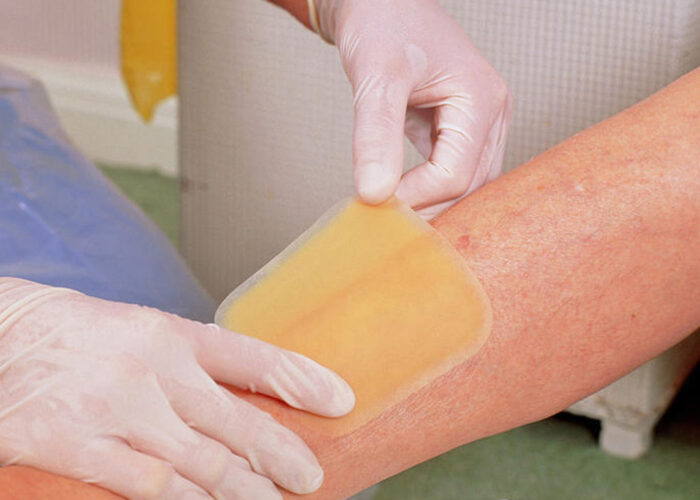Discover the power of hydrocolloid dressings in wound care. Learn how these innovative solutions enhance healing and improve patient outcomes.
Introduction
When it comes to wound care, innovative solutions play a crucial role in accelerating the healing process and improving patient outcomes. One such solution that has gained significant attention in recent years is hydrocolloid dressings. These advanced dressings offer numerous benefits and have revolutionized the way we approach wound management. In this article, we will explore the incredible potential of hydrocolloid dressings and how they enhance wound care.
What Are Hydrocolloid Dressings?
Hydrocolloid dressings are a type of occlusive wound dressing that consists of a flexible and waterproof outer layer and an inner layer made of a gel-forming substance such as gelatin or pectin. These dressings are designed to create a moist environment around the wound, which is conducive to the healing process.
The gel-forming properties of hydrocolloid dressings allow them to absorb wound exudate, forming a gel-like substance that provides a moist environment for optimal wound healing. The outer layer of the dressing acts as a barrier, protecting the wound from external contaminants and bacteria.
How Do Hydrocolloid Dressings Enhance Wound Care?
1. Maintaining Optimal Moisture Levels
One of the key ways hydrocolloid dressings enhance wound care is by maintaining optimal moisture levels. The moist environment created by these dressings promotes wound healing by facilitating cell migration, reducing the risk of scarring, and improving the overall healing process. The dressing’s ability to retain moisture also helps to minimize discomfort and pain for the patient.
2. Promoting Autolytic Debridement
Hydrocolloid dressings promote autolytic debridement, a natural process in which the body’s enzymes break down dead tissue. The gel-like substance formed by the dressing helps to soften and lift necrotic tissue, making it easier to remove during dressing changes. This promotes a clean wound bed and facilitates the growth of healthy granulation tissue.
3. Protecting the Wound from Contamination
The waterproof outer layer of hydrocolloid dressings acts as a protective barrier, preventing bacteria and other contaminants from entering the wound. This feature is especially beneficial for wounds at risk of infection, such as pressure ulcers or surgical incisions. By creating a barrier, hydrocolloid dressings reduce the risk of complications and support the healing process.
4. Allowing for Longer Wear Time
Hydrocolloid dressings are known for their extended wear time, which can range from several days to a week, depending on the type of wound and its exudate levels. This extended wear time reduces the frequency of dressing changes, minimizing disruption to the wound bed and reducing the risk of infection. It also offers convenience for both patients and healthcare providers, allowing for more efficient wound management.
Innovative Solutions: How Hydrocolloid Dressings Enhance Wound Care
Innovative solutions are constantly emerging in the field of wound care, and hydrocolloid dressings have undoubtedly made a significant impact. These dressings combine advanced technology with the fundamental principles of wound healing to provide optimal conditions for the recovery process. By maintaining moisture levels, promoting autolytic debridement, protecting the wound from contamination, and allowing for longer wear time, hydrocolloid dressings offer a holistic approach to wound care.
Frequently Asked Questions (FAQs)
1. Are hydrocolloid dressings suitable for all types of wounds?
Hydrocolloid dressings are suitable for a wide range of wounds, including pressure ulcers, diabetic foot ulcers, surgical wounds, and minor abrasions. However, they may not be the best choice for heavily exuding or infected wounds. It is always recommended to consult with a healthcare professional to determine the most appropriate dressing for a specific wound.
2. Can hydrocolloid dressings be used on sensitive skin?
Yes, hydrocolloid dressings are generally safe to use on sensitive skin. However, some individuals may experience mild irritation or allergic reactions to the adhesive components of the dressing. It is important to monitor the skin closely during the initial application and seek medical advice if any adverse reactions occur.
3. How often should hydrocolloid dressings be changed?
The frequency of dressing changes depends on the individual wound and its exudate levels. In general, hydrocolloid dressings can be left in place for several days to a week, or until the dressing becomes saturated or loses its adhesion. It is recommended to follow the healthcare professional’s instructions for specific wound management.
4. Can hydrocolloid dressings be used during bathing or showering?
Yes, hydrocolloid dressings are waterproof and can typically withstand exposure to water during bathing or showering. However, it is advisable to check the specific product instructions, as some dressings may have limitations or require additional protection during water exposure.
5. Are there any alternatives to hydrocolloid dressings?
Yes, there are several alternative types of dressings available for wound care, including foam dressings, alginate dressings, and gauze dressings. The choice of dressing depends on various factors, such as wound type, exudate levels, and individual patient needs. Healthcare professionals can assess the wound and recommend the most suitable dressing option.
6. Do hydrocolloid dressings leave residue or cause skin maceration?
Hydrocolloid dressings are designed to minimize residue upon removal. However, in some cases, a slight adhesive residue may remain on the skin, which can be gently cleaned with mild soap and water. Skin maceration, which refers to the softening or breakdown of the skin due to excessive moisture, is rare with hydrocolloid dressings, as they are specifically designed to maintain an optimal moisture balance.
Conclusion
Hydrocolloid dressings have revolutionized wound care by providing innovative solutions that enhance the healing process. With their ability to maintain optimal moisture levels, promote autolytic debridement, protect against contamination, and offer extended wear time, these dressings offer a comprehensive approach to wound management. By embracing the advancements in wound care, healthcare professionals can ensure improved outcomes and a more comfortable healing experience for patients.


No Comment! Be the first one.